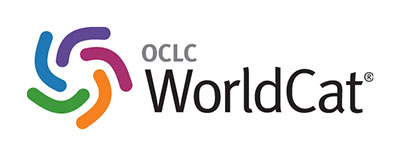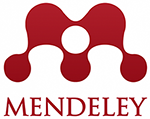Restauraciones adhesivas mínimamente invasivas en el sector posterior:Revisión bibliográfica
DOI:
https://doi.org/10.26871/killcanasalud.v6i1.1023Abstract
Summary
Context: Restorations in the posterior sector continue to become a challenge when working with adhesion and obtaining a minimum loss of remanent. In the past, the clinician used to apply a post and crown for all restorations, without considering that nowadays exist a biomimetic dentistry.
Objective: Describe a minimally invasive adhesive preparations protocol in the posterior sector so that the clinician can carry out treatments of dental durability and preservation as established by the scientific literature.
Materials and Methods: In the present bibliographic review, a data collection was made in scientific databases, Scielo, PubMed and books, for the inclusion criteria years of publication, systematic reviews, literature review and case reports were considered, as well books of the specialty.
Results: Of the 57 publications located, 14 were scientific articles 1 book and 1 clinical guide which have useful information to establish the protocol for minimally invasive restorations in the posterior sector.
Conclusions: Adhesive preparations and techniques in order to preserve as much healthy tissue as possible, dental, pulp and periodontal, providing less dentin exposure, to avoid preparations with wide margins, occlusal grooves and pits.
Keywords: Biomimetic Dentistry, Adhesion, Inlays
Downloads
References
Lamas-Lara C, Alvarado-Menacho S, Angulo de la Vega G. Rehabilitación estética del sector anterior con cerámica libre de metal. Reporte de caso. Rev Estomatológica Hered. 2014;23(4):210.
Milicich G. The compression dome concept: The restorative implications. Vol. 65, General Dentistry. 2017. p. 55–60.
Alleman DS, Nejad DDSMA, Capt DDS, Scott D. The Protocols of Biomimetic Restorative Dentistry: 2002 to 2017. Insid Restor [Internet]. 2017;(June). Available from: www.insidedentistry.net
Dávila-Gallardo DC, Farfán-Mera K. Restauraciones indirectas: análisis comparativo en elemento finito de inlays y overlays en premolares con cavidades mod restauradas con cerómero y cerámica. Odontol . 2015;17:117–25.
Carlo Massimo Sarrat, Carl Merheb LF. Rehabilitación de boca completa de un caso de desgaste dental severo un enfoque digital, estético y funcional.pdf. 2020.
Peter Shellins R. Las interacciones entre desgaste, abrasión y erosión en el desgaste dental. 2014
Cameron CE. The cracked tooth syndrome: additional findings. J Am Dent Assoc. 1976;93(5):971–5.
Banerji S, Mehta SB, Millar BJ. Cracked tooth syndrome. Part 1: Aetiology and diagnosis. Br Dent J. 2010;208(10):459–63.
Chaple Gil AM. Comparison of two classifications of cavity preparations and carious lesions: Mount & Hume, and Black. Rev Cubana Estomatol. 2015;52(2):160–70.
Nocchi Conceicao E. Odontología Restauradora: Salud y Estética. 2da Edició. Buenos Aires: Editorial Médica PANAMERICANA; 2008. 560 p.
Driscoll CF, Freilich MA, Guckes AD, Knoernschild KL, Mcgarry TJ. The Glossary of Prosthodontic Terms: Ninth Edition. J Prosthet Dent. 2017;117(5):e1–105.
Tello Roberto. Guía clínica para las preparaciones dentarias. 2020
Veneziani M. Adhesivo indirecto posterior restauraciones : indicaciones actualizadas y Morphology Driven Técnica de preparación. 2017;204–31.
Iglesia Puig MÁ. Restauraciones de recubrimiento parcial indirectas adheridas en sectores posteriores: indicaciones actuales. Clinicamaip. 2020;22(2):20–38.
García J. Carillas Oclusales table Tops. :1–6. 2015
Boukhris H, Touffeha G, Nouha M, Karoui L, Hajjami H. Veneerlays : A suitable Conservative Approach for Restoring Posterior Teeth. 2018;2(5):1–9.
Laghzaoui S, Chafii A, Ghattas S EMS and BA. Minimally Invasive Dental Prosthesis: Overlay, Veneerlay, Tabletops. Oral-and-dental-health. 2021.










